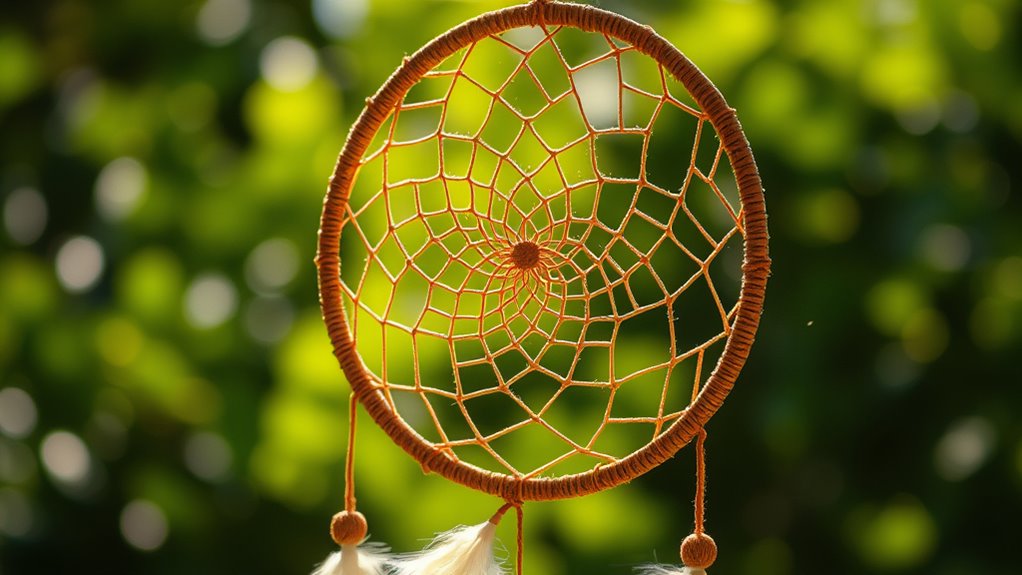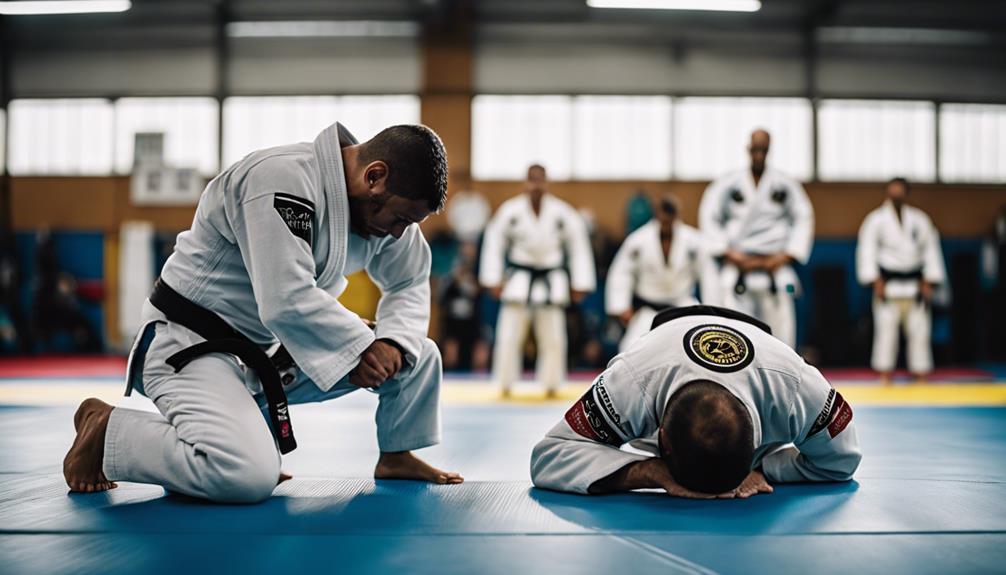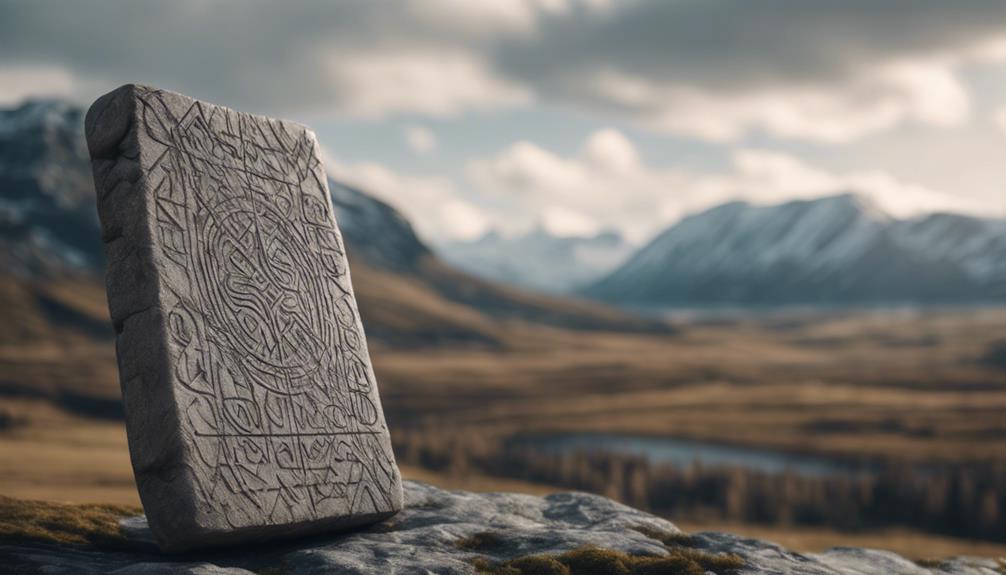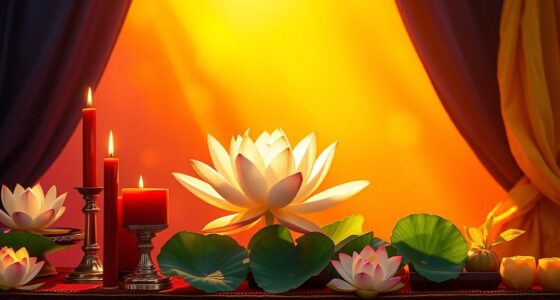Dream catchers originate from Native tribes like the Ojibwe, where they hold spiritual significance as protectors of sleep. You’ll find them crafted with symbols and materials meant to trap negative dreams in the web while allowing positive ones to flow through feathers. They symbolize protection, peace, and spiritual harmony, and their creation involves rituals that honor tradition. If you stay curious, you’ll discover how their meaning goes far beyond simple decoration.
Key Takeaways
- Dream catchers originate from Native American tribes, especially the Ojibwe, with spiritual significance as protective talismans.
- They are believed to filter out bad dreams while allowing good dreams to pass through the web.
- Crafted with symbolic materials like feathers and beads, each element carries spiritual meaning.
- Traditionally used in rituals and ceremonies, emphasizing respect for nature and spiritual harmony.
- In modern times, they are popular decorative items, but their cultural and spiritual roots remain important.
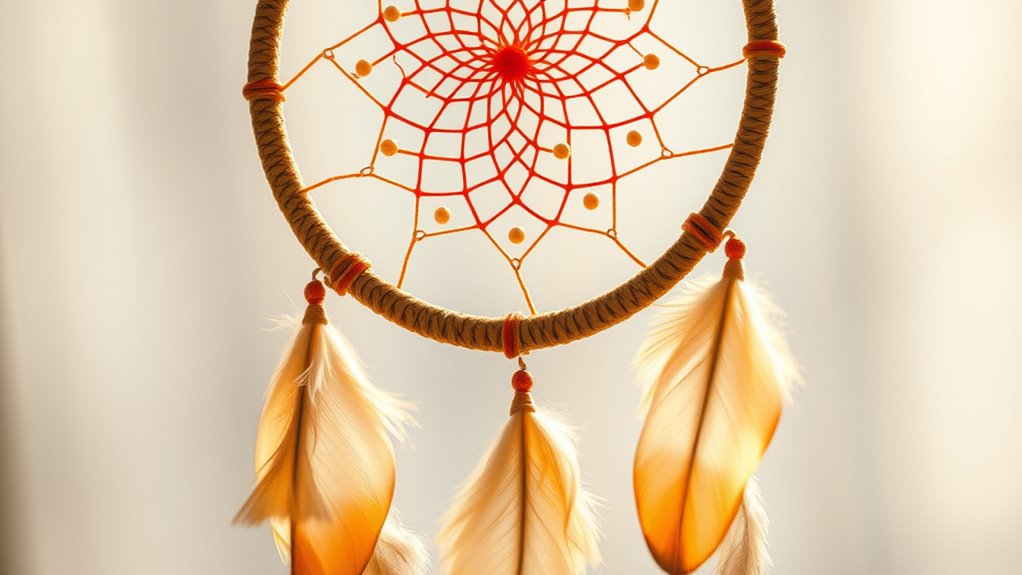
Have you ever wondered how some cultures believe a simple piece of craftsmanship can protect you from bad dreams? Dream catchers are a perfect example. Originating from Native traditions, particularly the Ojibwe people, these intricate creations are more than just decorative objects. They hold deep spiritual significance, believed to act as filters that capture bad dreams and let only good ones pass through. In many Native communities, dream catchers are crafted with specific symbols and materials that carry spiritual meaning. For instance, the web in the center is said to trap negative energy, while the feathers allow positive dreams to gently descend onto the sleeper below. These traditions emphasize respect for nature and spiritual harmony, often involving rituals and ceremonies when making or hanging a dream catcher. The craftsmanship itself becomes a sacred act, rooted in cultural beliefs passed down through generations.
Today, you’ll find dream catchers in many homes worldwide, often seen as beautiful bohemian decor or symbols of protection. However, these modern interpretations can sometimes stray from their original spiritual purpose. While they still serve as a reminder of Native traditions, many people buy or make dream catchers more for their aesthetic appeal rather than their spiritual significance. Some may not fully understand the symbolism embedded in traditional designs or the cultural importance behind the craft. Still, the core idea remains the same: a desire for protection from negative energy and bad dreams. When you hang a dream catcher above your bed or in a special place, you’re participating in a tradition that has evolved over time but still carries the essence of safeguarding and spiritual harmony.
Understanding the origins and spiritual purpose of dream catchers enriches their meaning. They aren’t just pretty objects but are deeply rooted in Native beliefs about dreams and the spiritual world. Whether you see them as cultural artifacts or personal talismans, their purpose is to bring positive energy and peace into your space. Recognizing their Native roots helps you appreciate the respect and intention behind their creation. Meanwhile, modern interpretations showcase how these symbols have traveled and transformed across cultures and generations, often losing some of their original depth but still serving as a reminder of protection and hope. When you look at a dream catcher, think of it as more than decoration; it’s a link to a rich cultural history and a symbol of universal human longing for safety and serenity during sleep.
Frequently Asked Questions
Are Dream Catchers Effective in Preventing Bad Dreams?
Dream catchers can be effective in preventing bad dreams if you believe in their spiritual benefits. They work by filtering negative energy and promoting positive vibes, which may improve your overall sleep hygiene. Incorporating meditation benefits alongside a calming bedtime routine can further enhance your sleep quality. While not scientifically proven, many find that using a dream catcher helps create a peaceful environment, reducing anxiety and encouraging restful sleep.
Can Dream Catchers Be Customized for Personal Spiritual Needs?
Yes, you can customize dream catchers for your personal spiritual needs by adding personal symbolism and creating custom designs. You might incorporate meaningful charms, colors, or patterns that resonate with your intentions or beliefs. This personalization helps you connect more deeply with the dream catcher’s purpose, making it a unique talisman that reflects your spiritual journey. Customizing allows you to craft a meaningful and powerful object tailored specifically to your needs.
What Materials Are Traditionally Used in Making Authentic Dream Catchers?
You’ll find that authentic dream catchers are traditionally made with natural materials. They typically feature a wooden hoop, often willow, wrapped in sinew or natural thread for traditional weaving. The web inside is crafted carefully, and you’ll see natural feathers attached at the bottom, symbolizing air and spirit. These materials help preserve the cultural significance and spiritual connection, making each dream catcher a meaningful and authentic piece.
How Do Different Cultures Interpret the Symbolism of Dream Catchers?
Imagine a web woven with purpose—different cultures see dream catchers as symbols woven with mythological significance. You learn that Indigenous Americans view them as protectors, filtering nightmares, while some African traditions see them as spiritual gateways. Each culture’s interpretation acts like a mirror reflecting unique beliefs, turning the dream catcher into a vessel of cultural symbolism, connecting worlds through the stories and spiritual meanings they hold dear.
Are There Any Health or Safety Concerns With Hanging Dream Catchers Indoors?
Hanging a dream catcher indoors generally poses minimal health or safety concerns if you maintain good indoor air quality. However, you should watch for allergen accumulation, especially if you or your family members have allergies or asthma. Regularly dust and clean your dream catcher to prevent mold or dust buildup, which can aggravate respiratory issues. Make sure it’s hung securely out of reach to avoid accidents, especially in high-traffic areas.
Conclusion
As you now know, dream catchers are more than just beautiful decorations—they’re guardians of your dreams, weaving ancient beliefs into your daily life. Like a gentle net, they catch bad dreams and let the good ones slip through, guiding you through restful nights. So, hang one in your space, and let it be a symbol of protection and hope, turning your dreams into a shining tapestry of positivity that lights your path each night.

